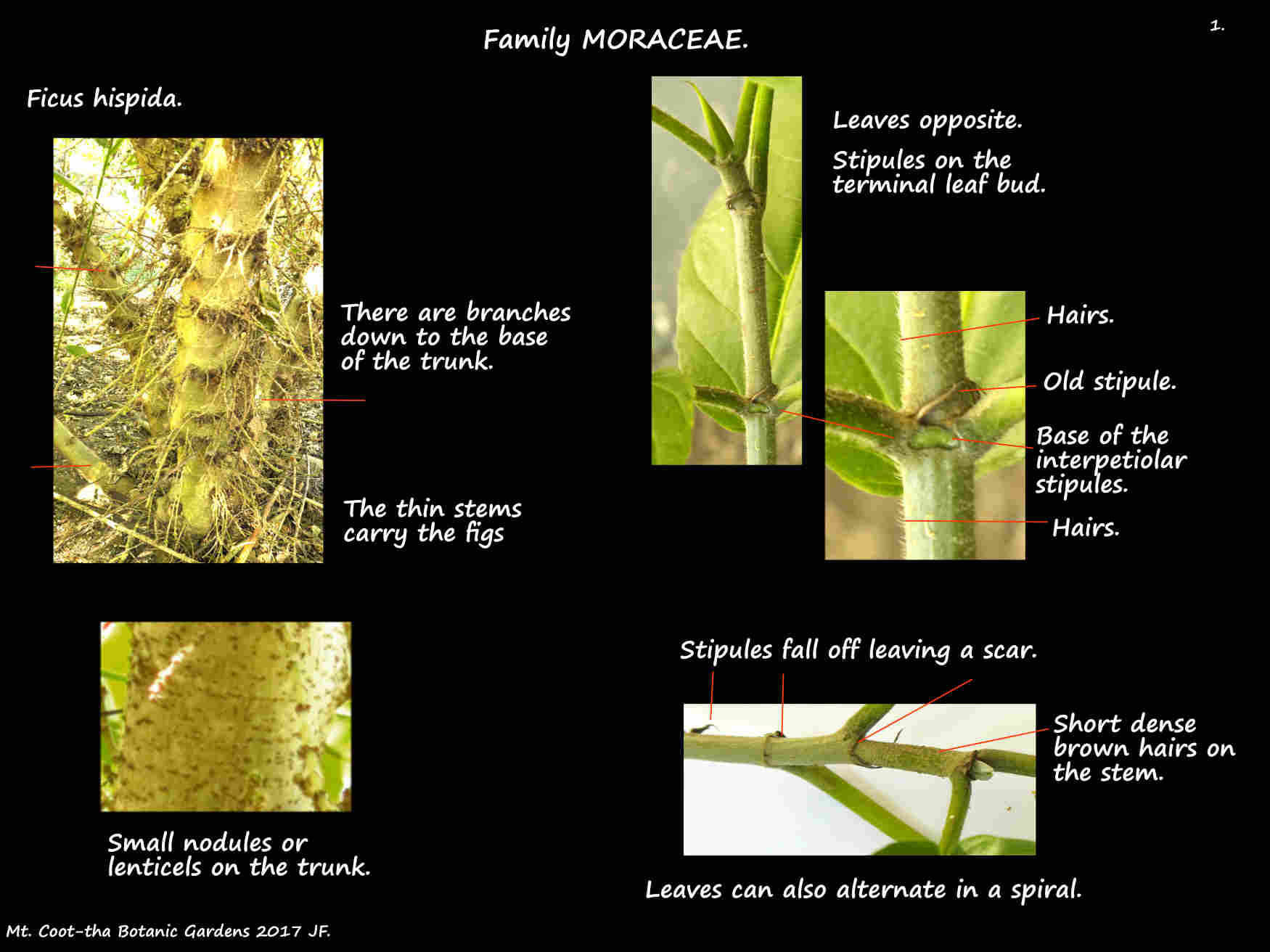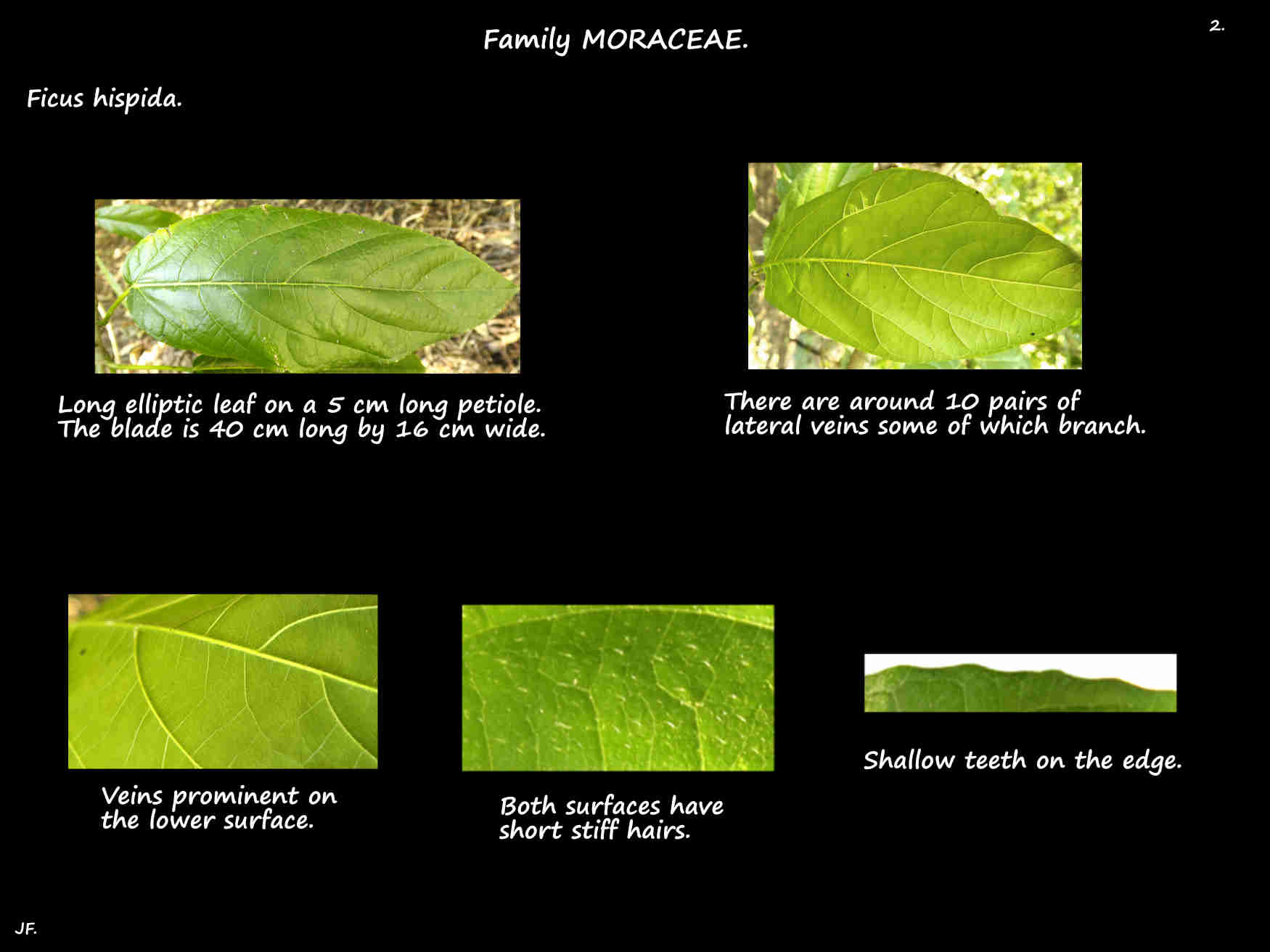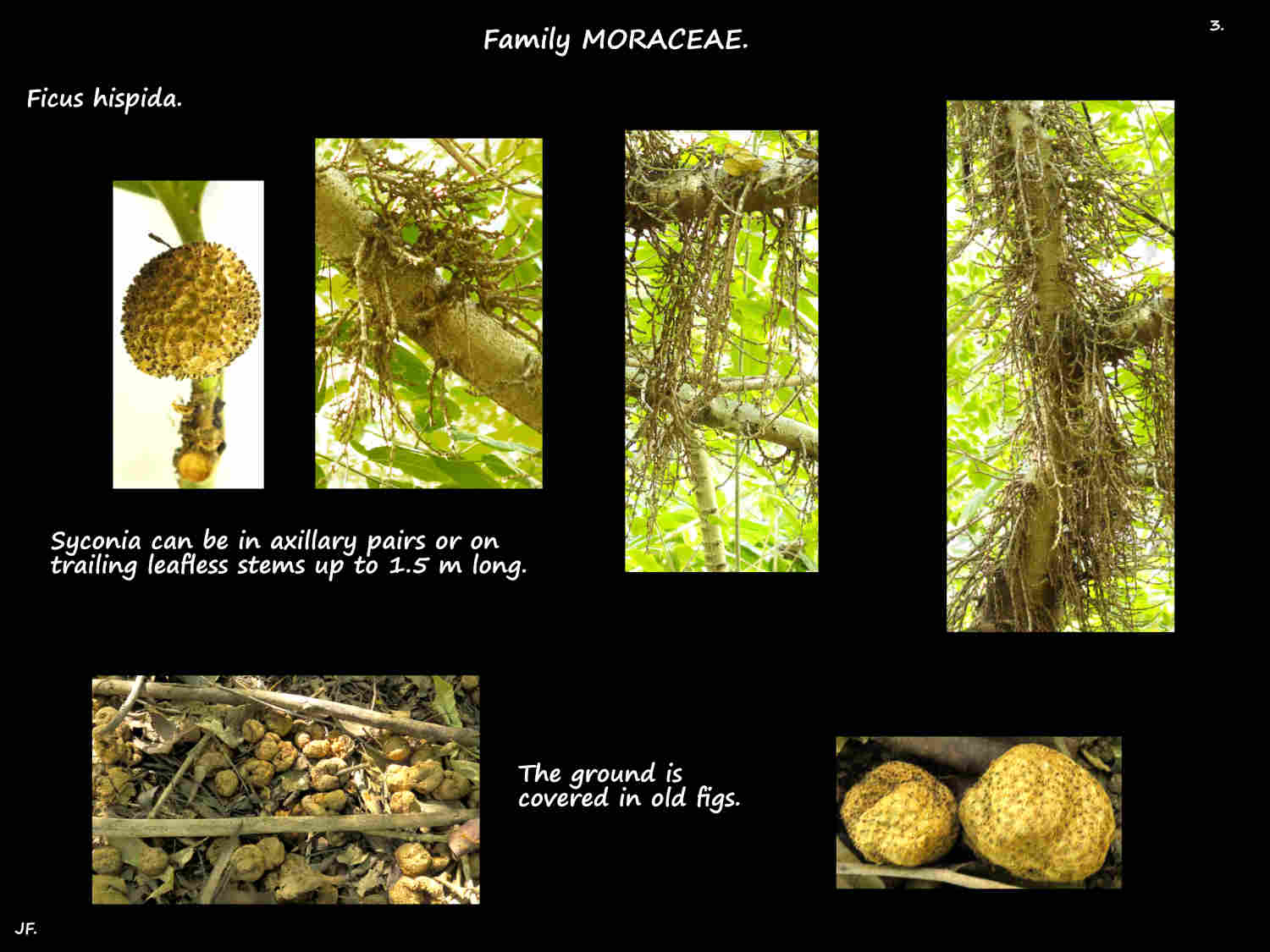Ficus hispida.
The Opposite leaf fig is in Family Moraceae > Genus Ficus > Subgenus Sycomorus.
Native to northern Australia and southern Asia they are shrubs or trees up to 13 m high.
The trunk, with smooth brown bark often has branches down to the ground.
Twigs are densely covered in stiff pale grey or brown hairs and damaged stems exude a lot of milky latex.
The leaves are typically opposite and decussate (in 4 ranks) but can also be sub-opposite and alternate in a spiral.
The grooved petioles, from 1 to 14 cm long have stiff hairs and sometimes 1 or 2 glands at the top.
There are up to 4 ovate to lanceolate stipules protecting the leaf buds.
Around 2 cm long they leave a scar around the branch when they fall.
The simple elliptic, ovate to oblong blades have a pointed tip and a rounded to heart-shaped base.
The blade is up to 20 or 30 cm long (40 on young trees) and 10 to 20 cm wide.
The edge can be smooth or have very shallow irregular teeth and both surfaces have short stiff white hairs.
There are around 10 pairs of lateral veins with 3 to 5 of them arising at the base of the blade.
Prominent on the lower surface they sometimes branch.
Inflorescences are an enlarged hollow receptacle (end of the stem) lined inside with the small flowers – a syconium.
They occur in axillary pairs or in clusters on the trunk and bare stems.
Many are on special trailing leafless stems up to 1.5 m long.
Each syconium is on a stalk or peduncle 1.5 cm long.
At the top to the peduncle are 3 basal bracts 1.5 mm long.
The opening or ostiole at the other end into the syconium is covered by up to 10 bracts.
Some fruit have small lateral bracts that lie flat along the surface.
The slightly flattened spherical syconia are densely covered in short brown hairs.
The flowers are unisexual with male and female syconia on separate trees.
There are no hairs or bracts between the flowers.
Male syconia have 1 or 2 rows of male flowers just inside the ostiole with gall flowers lining the rest.
Male flowers, on almost no stalk or pedicel have 3 perianth segments and 1 stamen with unequal anthers.
Female flowers may have a short or no pedicel.
The small perianth segments just cover the ovary which has a short hairy 1.5 mm style with a club-shaped stigma.
The ovary has a single ovule.
Gall flowers are sterile female flowers in which the pollinating wasp lays her eggs.
They are found in male and female syconia.
Compared to the fertile female flowers gall flowers have a larger ovary and are on a longer pedicel.
A female wasp in a female syconium has to lay her eggs in the gall flowers as she cannot reach the fertile ovaries.
The green syconia mature to yellowish figs up to 3 cm across.
J.F.




